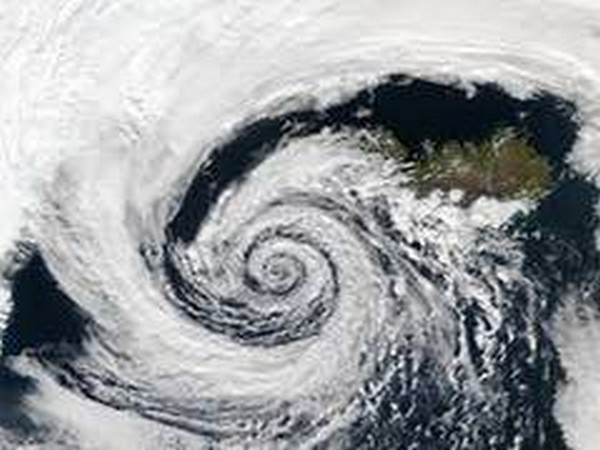Hurricane Fiona passes Bermuda but Canada braces for major jolt

H urricane Fiona drenched Bermuda with heavy rain and buffeted the Atlantic island with hurricane-force winds on Friday as it tracked northward toward eastern Canada, where it threatens to become one of the most severe storms in Canadian history. Fiona had already battered a series of Caribbean islands earlier in the week, killing at least eight people and knocking out power for virtually all of Puerto Rico's 3.3 million people during a sweltering heat wave.
Overnight, the storm approached Bermuda as a Category 4 storm but diminished a notch to Category 3 as it passed west of the British territory. Still, gusts reached as high as 103 miles per hour, the Bermuda Weather Service said in a bulletin. The Bermuda Electric Light Co, the island's sole power provider, said about 29,000 customers, or more than 80% of its customer base, had no electricity on Friday morning.
But Michelle Pitcher, the deputy director of the Bermuda Weather Service, said the territory appeared to be largely unscathed. "It's been a long night but there are no reports of injuries or fatalities," she said. "There may be people with roof damage, but so far we haven't heard of anything bad. As I said, we build our houses strong."
Many Bermuda homes are built with small shuttered windows, slate roofs and limestone blocks to withstand frequent hurricanes. By late Friday morning, Hurricane Fiona was about 600 miles (970 km) south of Halifax, Nova Scotia, on Canada's eastern coast, moving north at 35 mph (56 km per hour) with maximum sustained winds of 130 mph (215 kph), the U.S. National Hurricane Center said.
PROJECTED LANDFALL IN CANADA When it arrives in Nova Scotia on Saturday morning, Fiona is expected to make landfall as a powerful post-tropical storm bigger than Hurricane Juan in 2003 and stronger than Hurricane Dorian in 2019, Canadian Hurricane Centre meteorologist Bob Robichaud said at a briefing.
"Where it fits in the history books, we'll have to make that determination after the fact but it is going to be certainly a historic, extreme event for eastern Canada," Robichaud said. Fiona is expected to hit Canada's Cape Breton Island, home to about 135,000 people, or 15% of Nova Scotia's population, Environment Canada said on Friday.
A hurricane warning was in effect for most of central and eastern Nova Scotia, Prince Edward Island and Newfoundland, provinces on the east coast of Canada. The eye will move across Nova Scotia later on Friday, into the Gulf of St. Lawrence on Saturday and over Labrador on Sunday. Forecasters say areas close to its path could get up to 8 inches (200mm) of rain, while winds could damage buildings and cause utility outages, with storm surges swamping the coastlines. The country's two largest carriers, Air Canada and WestJet Airlines, are suspending regional service starting Friday evening.
Matthew Walker, a 31-year-old FedEx driver from Cole Harbour near Halifax, said he planned to stay indoors with his family, taking a rare break from his usual routine of working six days a week. "I've been through Juan and Dorian, so I feel OK," he said. "I know it's going to be historic but I feel it can't be worse than Juan."
HURRICANE FIONA RECOVERY EFFORTS Fiona already displayed its devastating strength the Caribbean, killing at least four people in Puerto Rico, the U.S. Federal Emergency Management Agency said.
U.S. President Joe Biden at a New York briefing on Thursday said the federal government would fund debris removal, power and water restoration as well as shelter and food for the next month. An estimated 928,000 homes and businesses were still without power in Puerto Rico on Friday morning after Fiona caused an island-wide power outage for its roughly 3.3 million people, according to PowerOutage.us.
The numbers indicate a faster pace of restoration than in the aftermath of Hurricane Maria in 2017, although that Category 4 storm was much more powerful than Fiona, a Category 1 when it crossed Puerto Rico with winds of 85 mph. After Maria, which packed winds of 155 mph, almost all 1.5 million customers on the island had no power for a week. At that time, the now-bankrupt Puerto Rico Electric Power Authority (PREPA) was still operating the grid. It took PREPA about 11 months to restore power to all customers. Javier Rivera-Aquino, 50, who used to be a farmer in Lares, Puerto Rico, before Hurricane Marie destroyed his livelihood, said area farms were still digging out, with coffee fruit knocked off the plants grown in the mountains and whole banana farms washed out in the valleys.
"Total devastation," he said. "They're hit bad and I'm not sure what they'll do."
(This story has not been edited by Devdiscourse staff and is auto-generated from a syndicated feed.)
ALSO READ
US: Missing Indian student found dead in Ohio, consulate in New York in touch with authorities to probe his death
US: New York appeals court rejects Donald Trump's request to delay hush-money trial
Baseball-Ohtani's former interpreter is negotiating a guilty plea, New York Times reports
US airlines seek FAA extension of New York minimum flight requirements cuts -letter
Airlines seek FAA extension of New York minimum flight requirements cuts -- letter










